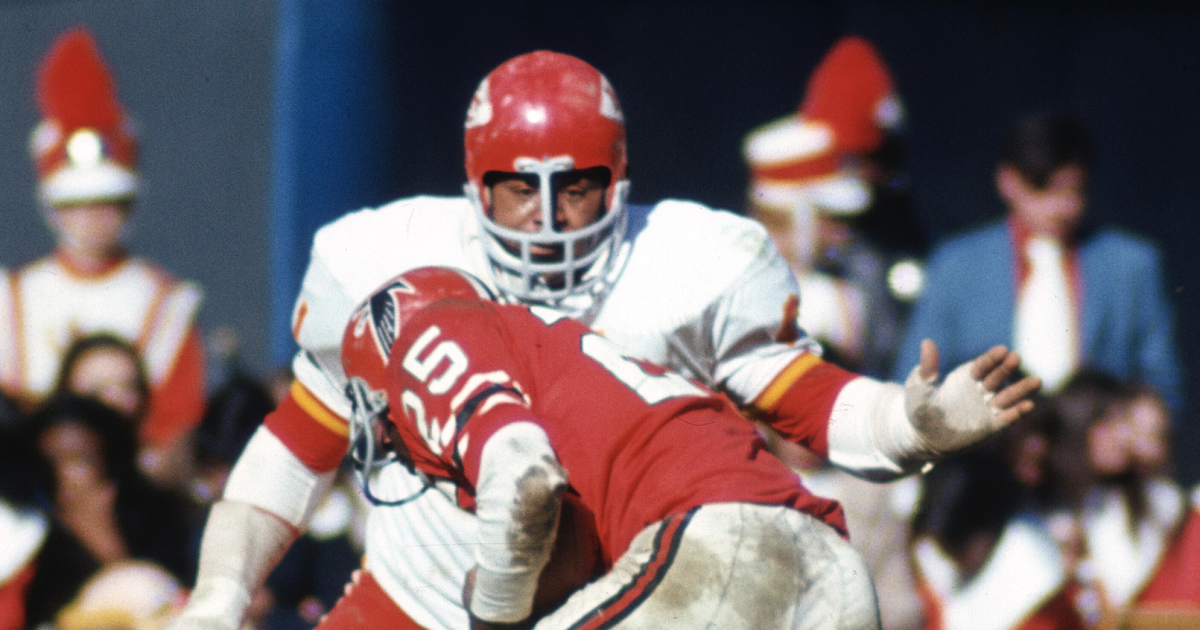NFL Great Battles Pancreatic Cancer Off The Field
- NFL great Curley Culp, 75, is battling stage IV pancreatic cancer. The defensive tackle, a six-time Pro-Bowler with the Kansas City Chiefs and Houston Oilers inducted into the Hall of Fame in 2013, shared the news on Twitter. He did not share his prognosis or when he was diagnosed with the disease.
- “To my followers, family, and friends, I have stage 4 pancreatic cancer. Do donate to your local cancer organizations so this dreaded disease is eradicated,” wrote Culp. “Love life, family, and friends. Folded hands pray to God for all physical and spiritual healing. Love, Curley Culp HOF#13.”
- Pancreatic cancer is difficult to diagnose early. This is because symptoms don’t typically occur until the cancer has already spread to other organs in the body.
The defensive tackle, a six-time Pro-Bowler with the Kansas City Chiefs and Houston Oilers inducted into the Hall of Fame in 2013, shared the news on Twitter.
Read MoreOne of the most prolific defensive linemen of his era and perhaps the greatest nose tackle, Culp arrived on the scene after earning All-American honors in football and wrestling at Arizona State, where he was the 1967 NCAA heavyweight champion.
He played 14 seasons in the National Football League. The first seven were with the Chiefs after being traded by the Denver Broncos. He then joined the Houston Oilers (now the Tennessee Titans) for six seasons before closing out his career with a single season.
Culp was part of the Chiefs squad that emerged victorious in Super Bowl IV and played a massive role in dismantling the running game of the Minnesota Vikings in the lopsided contest that ended with a score of 23-7.
His departure from the Chiefs came after he threatened to defect to the newly established World Football League. He continued to display the tremendous power that often required him to be covered by two if not three members of the offensive line.
In his first season with the Oilers, he was named NFL Defensive Player of the Year after recording a career-best 11.5 sacks. That same season, Culp also had three fumble recoveries, one of which resulted in the lone touchdown of his professional career.

Culp spoke at length about his career during his induction into the Hall of Fame back in a moving speech.
“I’ve learned that education helps you to believe and understand the best basic work of every human being no matter what his or our viewpoint maybe. I’ve learned that football is not just a sport, but a life lesson in what it means to be a team player,” said Culp.
“I’ve learned that there are many good people in the world who love to play this sport and recognize the value of sports as an avenue for building character. I’ve also learned from it the courage and wisdom of those who have coached me over the years.”
He continued: “I’ve learned that life itself is like playing a very long and exciting football game, where every play can determine the outcome. So in life, as in sports, we should play hard and clean and always do our best to succeed.”
Late-Stage Pancreatic Cancer Diagnoses
Pancreatic cancer is hard to diagnose early, and Curley Culp is one of the many diagnosed at stage IV.
This is because it is so difficult to detect the signs of the disease in stages I and II, meaning that it often is not until the cancer has metastasized to other organs in the body that people begin to notice symptoms.
Furthermore, the symptoms can be easily missed or dismissed by many, who might assume they are just sick, dehydrated, or tired.
Those symptoms include:
- Abdominal pain in the lower back
- Loss of appetite
- Sudden weight loss
- Yellowing of the skin
- Yellowing of the eyes (jaundice)
- Lighter-colored stools
- Darker-colored urine
- Itchy skin
- Recent diabetes diagnosis
- Inability to control diabetes
- Blood clots
- Fatigue
“The problem with pancreatic cancer is that it’s always, almost always, caught late. Meaning that it’s almost always metastasized or spread by the time it’s diagnosed because the symptoms don’t happen until it’s very late,” Dr. Allyson Ocean, medical oncologist, Weill Cornell Medicine, told SurvivorNet in a previous interview.
“The pancreas is an organ that’s in our body that’s in the back of our abdomen, in the back of our belly. It’s very close to the spine, actually. And so, if a tumor is growing in the pancreas, it doesn’t cause symptoms such as pain, or weight loss, or jaundice – which means yellowing of the skin – until the tumor is a very large size. And by that time, it’s usually already spread. So, we don’t have a way to detect this tumor early, and that’s the reason why we have such bad outcomes in this disease.”
Challenges to Screening for Pancreatic Cancer
Why Is Pancreatic Cancer Difficult to Treat?
“Think of pancreatic cancer as an oatmeal raisin cookie, and the raisins are actually the cancer cells, and the cookie part is all the stroma around it,” explains Dr. Ocean.
“And imagine having to navigate through all that stroma, for a treatment to have to navigate through all that stroma to be able to get into a cell to kill it. It has a hard time getting in."
The treatments have yet to find a way to penetrate the cancer, she says, and it is the main focus of scientists and drugmakers now to find a way to break through that stroma and reach the cancer cell.
“We’re improving. We’re getting better treatments. We are, and there’s a lot of stuff in clinical trials,” notes Dr. Ocean.
“But historically, it’s been a very difficult cancer to treat because of this stroma around [the cancer].”
Why Is Pancreatic Cancer So Hard To Treat?
Learn more about SurvivorNet's rigorous medical review process.


